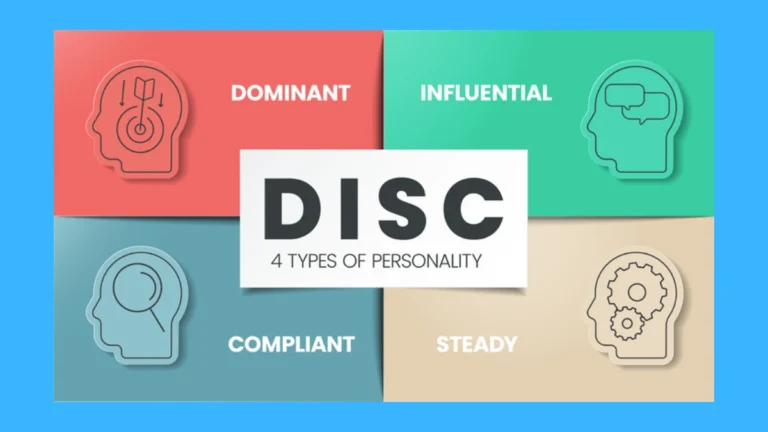Assertive communication: what it is and how to apply it is crucial for thriving in your personal and professional life. This article will guide you through what assertive communication means, its benefits, and how it can enhance your relationships. You’ll learn powerful techniques like using “I” statements and active listening. Plus, you’ll discover how to build confidence, set boundaries, and resolve conflicts effectively. Get ready to empower yourself with skills that will transform the way you communicate!
Understanding Assertive Communication: What It Is
The Definition of Assertive Communication
Assertive communication is all about expressing your thoughts, feelings, and needs openly and honestly. When you communicate assertively, you stand up for yourself while also respecting others. This style of communication helps you share your ideas without being aggressive or passive. You can say what you mean and mean what you say!
Key Benefits of Being Assertive
Being assertive has many benefits that can improve your life. Here are some key advantages:
| Benefit | Description |
|---|---|
| Boosts Self-Confidence | You feel more sure of yourself when you express your needs. |
| Reduces Stress | Clear communication can help avoid misunderstandings. |
| Improves Decision-Making | You can make choices that align with your values. |
| Enhances Relationships | Open dialogue fosters trust and respect with others. |
How Assertive Communication Improves Relationships
When you practice assertive communication, you build stronger connections with others. Here’s how:
- Encourages Open Dialogue: You create an environment where everyone feels safe to share their thoughts.
- Reduces Conflict: By expressing your feelings calmly, you can prevent misunderstandings before they escalate.
- Promotes Mutual Respect: You show that you value yourself and others, which strengthens bonds.
In short, assertive communication is about finding your voice and using it wisely. You can express yourself while also listening to others. This balance creates healthier relationships and a more positive atmosphere around you.
Techniques for Effective Assertive Communication
Using I Statements in Conversations
When you want to express your feelings or needs, using I statements is key. This technique helps you communicate without sounding aggressive or blaming others. Instead of saying, “You never listen to me,” try saying, “I feel ignored when I’m not heard.” This way, you take responsibility for your feelings and invite a conversation rather than starting a fight.
Benefits of Using I Statements:
- Reduces defensiveness: People are less likely to feel attacked.
- Promotes understanding: It helps others see your perspective.
- Encourages dialogue: It opens the door for more communication.
Practicing Active Listening in Assertiveness
Active listening is another essential part of assertive communication. It means really paying attention when someone else is speaking. Here’s how you can practice active listening:
- Maintain eye contact: This shows you’re engaged.
- Nod and use verbal cues: Simple sounds like “uh-huh” or “I see” can encourage the speaker.
- Avoid interrupting: Let them finish before you respond.
- Reflect back what you heard: This shows you understand. For example, “So what you’re saying is…”
Active Listening Benefits:
- Builds trust: People feel valued when you listen.
- Improves relationships: Stronger connections come from understanding.
- Enhances problem-solving: You gather more information to address issues.
Steps to Master Assertiveness Techniques
To become more assertive, follow these simple steps:
| Step | Action |
|---|---|
| 1 | Identify your needs: Know what you want to say. |
| 2 | Practice I statements: Write down your thoughts in “I” form. |
| 3 | Engage in active listening: Use the tips above in conversations. |
| 4 | Role-play scenarios: Practice with a friend or family member. |
| 5 | Seek feedback: Ask others how you come across in conversations. |
By following these steps, you can navigate conversations with confidence and clarity. Remember, assertive communication: what it is and how to apply it is a skill that takes time to develop, but the rewards are worth it.
Building Confidence in Communication
Overcoming Fear of Rejection
Fear of rejection can feel like a heavy weight on your shoulders. You might worry about what others think or how they will respond. To break free from this fear, start by changing your mindset. Remember, everyone faces rejection at some point. It’s a normal part of life.
Here are some steps to help you overcome this fear:
- Practice Self-Compassion: Treat yourself kindly. Remind yourself that it’s okay to make mistakes.
- Start Small: Begin by speaking up in low-pressure situations. This could be sharing your thoughts in a small group or asking a question in class.
- Reframe Your Thoughts: Instead of thinking, “What if they don’t like me?” try, “What if they appreciate my input?”
The Role of Body Language in Assertiveness
Body language plays a huge role in how you communicate. It can either boost your confidence or make you appear unsure. Here’s how to use body language to your advantage:
| Body Language Tip | What It Means |
|---|---|
| Stand Tall | Shows confidence and openness. |
| Make Eye Contact | Indicates engagement and sincerity. |
| Avoid Crossing Arms | Keeps you open and approachable. |
| Use Hand Gestures | Emphasizes your points and shows passion. |
When you use positive body language, people are more likely to listen and respond well. This, in turn, strengthens your assertive communication skills.
Tips for Boosting Your Confidence in Communication
Boosting your confidence doesn’t happen overnight. It takes practice and patience. Here are some simple tips to help you along the way:
- Prepare: Before important conversations, think about what you want to say. Write down key points if needed.
- Practice: Role-play with a friend or family member. This can make you feel more comfortable.
- Stay Positive: Focus on your strengths. Remind yourself of past successes in communication.
- Seek Feedback: Ask trusted friends for their input. They can help you see areas for improvement.
By following these steps, you’ll find that your confidence in communication will grow.
Expressing Needs Assertively
How to State Your Needs Clearly
When you want to express your needs, clarity is key. Start by using “I” statements. For example, instead of saying, “You never listen to me,” try saying, “I feel unheard when I talk.” This way, you focus on your feelings rather than blaming others.
Here are some tips to help you state your needs clearly:
- Be Direct: Don’t beat around the bush. Say what you mean.
- Use Simple Language: Avoid jargon or complicated words. Keep it straightforward.
- Stay Calm: Take a deep breath before speaking. A calm voice helps convey your message better.
The Importance of Setting Boundaries
Setting boundaries is crucial for your well-being. When you make it clear what you need, you teach others how to treat you. Boundaries help maintain respect in relationships. They also protect your time and energy.
Think about this: if you never say “no,” you might end up feeling overwhelmed. By setting limits, you create a safe space for yourself. This leads to healthier interactions with others.
Strategies for Expressing Needs Assertively
Here are some strategies to express your needs assertively:
| Strategy | Description |
|---|---|
| Practice Active Listening | Pay attention to others. It shows you value their input. |
| Be Honest | Share your true feelings. Honesty builds trust. |
| Use Positive Language | Frame your needs positively. Instead of “I can’t,” say “I prefer.” |
| Stay Consistent | Stick to your boundaries. Consistency reinforces your needs. |
By using these strategies, you can express your needs assertively and improve your communication skills.
Conflict Resolution Skills through Assertiveness
Handling Disagreements with Confidence
When you face a disagreement, confidence is key. Start by staying calm and taking a deep breath. This helps you think clearly. Speak in a steady voice and maintain eye contact. This shows you mean what you say. Remember, it’s okay to disagree. Everyone has their own opinions.
For example, if a coworker disagrees with your idea in a meeting, don’t back down. Instead, say, I see your point, but I believe my idea can work because… This way, you express your thoughts without being rude.
Techniques for Resolving Conflicts Assertively
Here are some simple techniques you can use:
- Listen Actively: Pay attention to what the other person is saying. Nod your head and repeat back what you hear.
- Use I Statements: Instead of saying You always interrupt me, try I feel overlooked when I’m not allowed to finish my thoughts.
- Stay Focused on the Issue: Don’t bring up past problems. Stick to the matter at hand.
- Find Common Ground: Look for points you both agree on. This can make it easier to resolve the disagreement.
| Technique | Description |
|---|---|
| Listen Actively | Show you care by paying attention. |
| Use I Statements | Express your feelings without blaming others. |
| Stay Focused | Keep the discussion on the current issue. |
| Find Common Ground | Identify shared interests to build a solution together. |
The Benefits of Assertive Conflict Resolution
Resolving conflicts assertively has many benefits. It helps build stronger relationships. When you communicate clearly, others respect you more. You also feel better about yourself.
Additionally, assertive communication can lead to better teamwork. When everyone feels heard, it creates a positive environment. You’ll find that people are more willing to work together to solve problems.
Remember, assertive communication: what it is and how to apply it can change your interactions for the better.
Self-Advocacy Skills for Personal Growth
Why Self-Advocacy Matters
Self-advocacy is about speaking up for yourself. It means knowing what you want and how to ask for it. When you advocate for yourself, you take control of your life. This skill can help you in many areas, like school, work, and even personal relationships. Here’s why it’s important:
- Builds Confidence: When you express your needs, you feel more confident in yourself.
- Improves Relationships: Clear communication helps others understand you better.
- Promotes Independence: You become more self-reliant and make decisions that are right for you.
How to Practice Self-Advocacy Daily
You can practice self-advocacy every day. Here are some simple steps to get started:
- Know Your Needs: Write down what you want in different areas of your life.
- Practice Speaking Up: Use role-play with a friend to practice what you want to say.
- Be Direct and Clear: When you ask for something, be straightforward. Use I statements, like I need or I feel.
- Listen Actively: Pay attention to others’ responses. This shows you care about their thoughts too.
- Reflect on Your Experiences: After you advocate for yourself, think about what went well and what you can improve.
| Step | Description |
|---|---|
| Know Your Needs | Write down your needs and desires. |
| Practice Speaking Up | Role-play scenarios with a friend. |
| Be Direct and Clear | Use I statements for clarity. |
| Listen Actively | Show you care by paying attention to responses. |
| Reflect | Think about your experiences after advocating. |
The Connection Between Assertiveness and Self-Advocacy
Being assertive is a big part of self-advocacy. Assertive communication: what it is and how to apply it means expressing your thoughts and feelings confidently. Here’s how they connect:
- Clear Communication: Assertiveness helps you communicate your needs clearly.
- Respect for Yourself and Others: You value your own needs while respecting others.
- Conflict Resolution: Being assertive helps you handle disagreements calmly.
Think of assertiveness as the bridge that connects your needs with the world around you. When you are assertive, you can cross that bridge to reach your goals.


